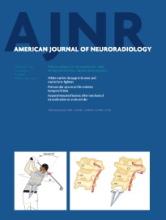Abstract
BACKGROUND AND PURPOSE: Stroke is a leading cause of death and disability, and many studies have focused on the evolution of FLAIR imaging in the acute and chronic time window. The purpose of this study was to evaluate the potential efficacy of FLAIR-related techniques in identifying the onset time of cerebral ischemia in a canine embolic stroke model.
MATERIALS AND METHODS: An embolic ischemic model was generated through the use of an autologous clot in 20 beagle dogs. Both FLAIR and DWI were performed at 3 hours, 4 hours, 5 hours, 6 hours, and 24 hours after embolization, respectively. Visual “DWI-FLAIR mismatch” was defined as hyperintense signal detected on DWI but not on FLAIR. The relative signal intensity of FLAIR-positive lesions and the degree of DWI-FLAIR mismatch was calculated as relative FLAIR = relative signal intensity of FLAIR positive lesions, mismatch degree = (100−VFLAIR/VDWI) × 100%.
RESULTS: The ischemic model was successfully established in all animals. FLAIR-positive lesions were seen in 3, 11, 16, 19, and 20 beagle dogs at 5 time points after embolization, respectively. There was significant correlation between the relative FLAIR, degree of DWI-FLAIR mismatch, and the onset time (relative FLAIR: r = +0.42; 95% CI, 0.20–0.60; mismatch degree: r = −0.85; 95% CI, 0.89–0.78). Receiver operating characteristic curves showed that the degree of DWI-FLAIR mismatch could identify the hyperacute ischemic lesions with a sensitivity range from 1.00–0.76; visual DWI-FLAIR mismatch sensitivity ranged from 0.85–0.39, whereas specificity was 0.83–0.95 versus 0.85–1.00.
CONCLUSIONS: The relative FLAIR and DWI-FLAIR mismatch values were useful in predicting the onset time in our canine embolic stroke model. The degree of DWI-FLAIR mismatch proposed in our study could be a good indicator with high sensitivity for identifying the hyperacute ischemic stroke.
ABBREVIATIONS:
- rSI
- relative signal intensity
- DWI-FLAIR mismatch
- DWI positive and FLAIR negative
- ROC
- receiver operating characteristic
- rFLAIR
- relative signal intensity of FLAIR positive lesions
- SI
- signal intensity
- rADC
- relative ADC
- © 2014 by American Journal of Neuroradiology
Indicates open access to non-subscribers at www.ajnr.org












